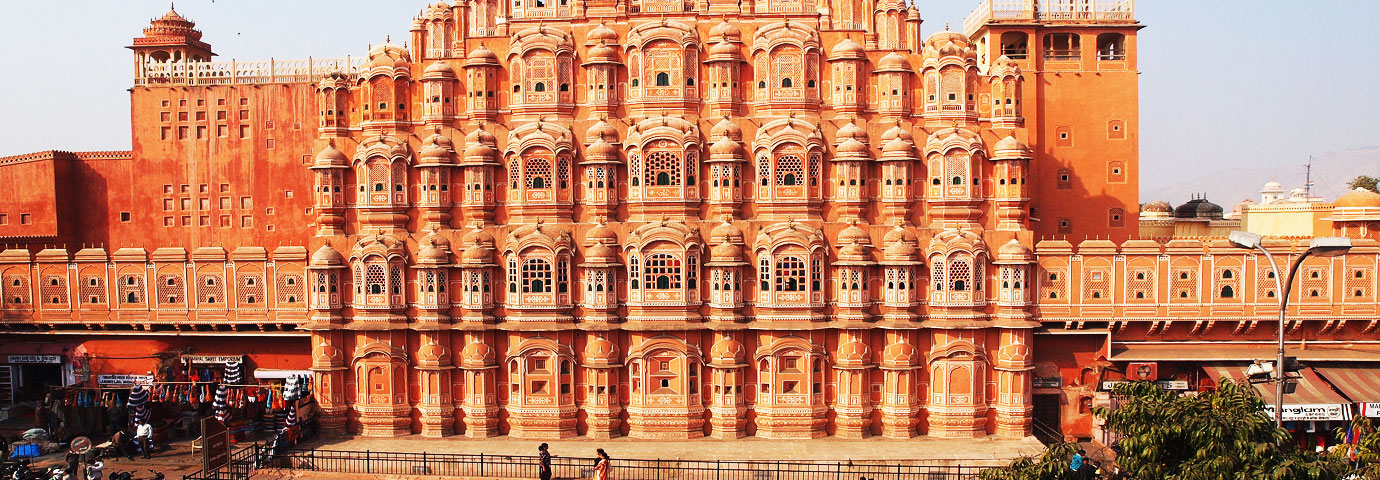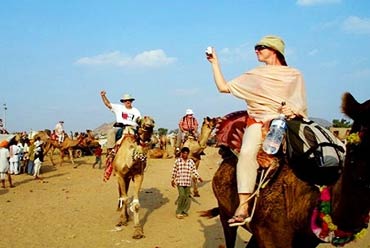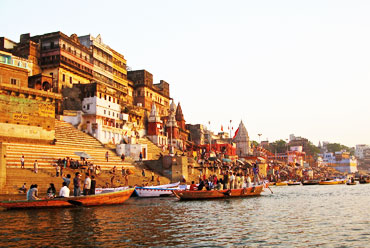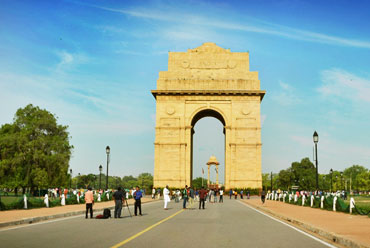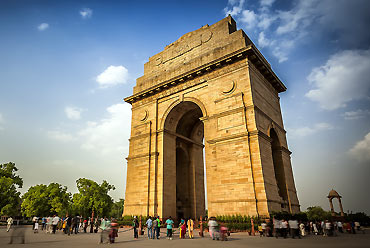Architecture of Hawa Mahal
Hawa Mahal is a five-storied building that had a beehive structure wherein the main façade is dotted with 953 small windows. From outside the structure looks like Lord Krishna’s crown. The windows of lattice work, small balconies, and arched roof with hanging corners. Placed close to the City Palace Complex, this is a pink and red stone building with beautiful white borders. The arched small chhatris with delicate carvings are a mark of the royal Rajputana architectural style.
The top three storeys of Hawa Mahal have Vichitra Mandir, Prakash Mandir and Hawa Mandir. Lord Krishna was worshipped by the Maharaja at the Vichitra Mandir. Prakash Mandir has open terraces on both the sides. Upper floors are accessible through ramps and have no stairs, so that the palanquins of the royal ladies could be carried easily. Sharad Mandir, on the first floor, was the venue of autumn celebrations. The highlight of Ratan Mandir on the second floor was the wonderful glasswork in varied colors. There is an amazing collection of weapons, antiques, and other precious items that were used by royal families.

